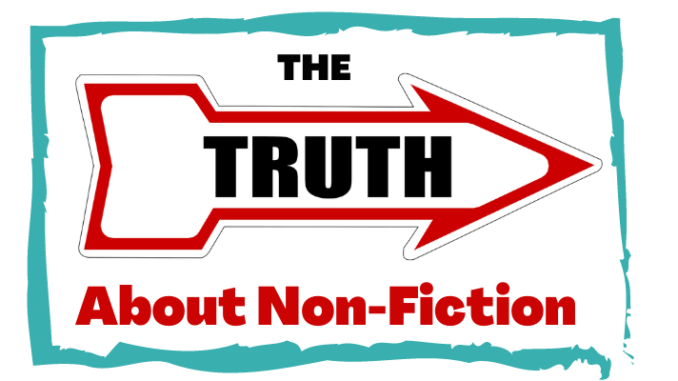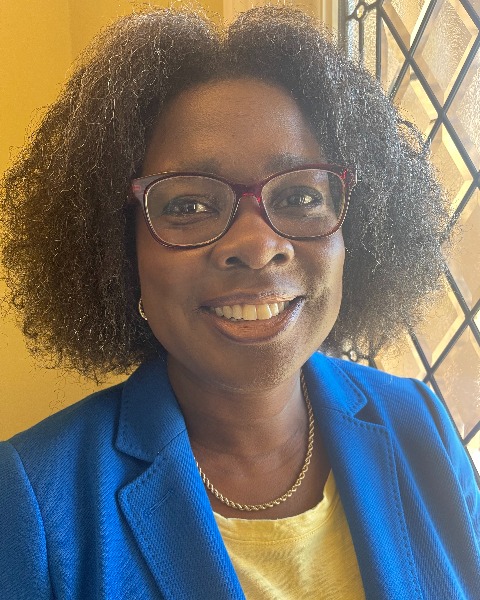
By Iniyal Inparjah, Mishelle Pitter-Adlam, and Melanie Mulcaster
We live in a world that bombards us with information on a daily basis, beginning from the moment we get up. Students also live in this same world but may not encounter the same texts in the same way.
As adult learners, eighty to ninety percent of the daily reading we do is non-fiction (Harvey, 2002). We scroll through news feeds, read online magazines and articles from our social media apps, browse memos, email, manuals, and decipher charts, maps and infographics. Informational and non-fiction texts enable us to navigate and participate in society – and we rely on them daily. Non-fiction texts contribute to our foundational knowledge and understanding; and may ultimately become an additional compass for defining future interests, pursuits, and goals.
How then does the use of non-fiction translate into the classroom? From personal experience, non-fiction texts are not the primary focus in classroom reading libraries, even though learning through non-fiction texts is something we encounter daily.
“Research suggests that reading non-fiction has many benefits to children in the elementary grades. Exposure to non-fiction in the elementary grades can prepare children for the kinds of texts they will encounter in high school and college and as adults in the workforce.”
(Jeong et al., 2010)
The lack of non-fiction in learning environments may lead us to assume that learners actually prefer fiction over fact-based books. However, studies have indicated that perhaps the opposite is true. In 2015, a group of psychologists completed a study that showed many readers actually do prefer nonfiction texts (Barnes, Bersten & Bloom, 2015). Take a moment to think about the learners who are drawn to non-fiction texts during every library learning commons visit. These learners often make sense of their world through images that are familiar or interesting to them. Their wonders and questions stem from the images and information within the non-fiction text.
“Teachers [in the past may have believed that] nonfiction was boring and uninteresting to children (Colman, 2007), and in elementary classrooms, reading fiction was prioritised at nonfiction‟s expense.”
(Moss, 2003; Pappas, 1993; Saul & Dieckman, 2005)
What then, is the truth of non-fiction? What is the importance of non-fiction texts and how can they be ultilized in classrooms to support student success?
- Indeed non-fiction is the genre most likely to spur children’s passion and wonder for learning. Non-fiction breeds passionate curiosity; passion leads to engagement (Harvey, 2002). Non-fiction texts introduce students to multiple worlds of creativity.
“Creativity is the history of science and innovation.”
(Emdin, 2022)
- The use of non-fiction texts in learning environments can facilitate the development and extension of vocabulary, build a repertoire of background information, and help the learners make connections to the natural world. Cross curricular use of non-fiction texts are particularly helpful for multilingual learners, allowing for deeper connections amongst and between concepts. The exposure to content language in a variety of different contexts and repetitive reinforcement can lead to authentic connections to learning. Non-fiction introduces diverse community perspectives, encourages learners to ask questions, address real world issues, and inspires us to dig deeper to inquire further.
- The regular integration of non-fiction and STEM applications goes even deeper; incorporating problem solving, vocabulary building, writing and speaking. S.T.E..M is often an acronym that suggests “doing or creating” something. Non-fiction texts can also inspire learners to “do or create” something both inside and outside the classroom.
“Many of us mistakenly believe STEM happens only in labs and clean rooms. But it also happens in garages, basements, and parks. It happens in cities, on farms, and in rural areas. STEM is all around us, and nearly every topic, passion, and activity can be tied to STEM, giving it wide-ranging relevance and applicability.”
(Emdin, 2022)
- In addition to sparking wonder and exploration, non-fiction texts help children learn about the nature of science and what scientists from across the world do (Fries-Gather & Morgan, 2018). The new STEM Skills and Connections strand of the 2022 Ontario Science curriculum features “ [analysing] contributions to science and technology from various communities” (Ontario Ministry of Education, 2022). Newly published non-fiction texts have the potential to be windows, mirrors, and sliding glass doors (Bishop, 1990), reflecting lived experiences and identities; or experiencing worlds different from their own perspective, building empathy and mutual understanding.
Indeed, future scientists and engineers can’t comprehend complex texts if they can’t read (Strauss on behalf of Roe & Smith, 2012). The Right to Read Inquiry Report (Ontario Human Rights Commission, 2022) outlines the devastating effects of being illiterate can have on an individual. One recommendation is a more culturally relevant approach. The re-imagining of STEM applications in the Ontario curriculum expectations can support this recommendation.
- Non-fiction texts can be used to “challenge text and life as we know it” (McLaughlin & DeVoogd, 2004), to become critical consumers and users of information. Students need both basic literacy and critical literacy to come to terms with the many forms and types of text that surround them, to ask questions, to examine viewpoints (their own and others), to take a stand and to clarify the issues and relationships that are important to them and their future.
- Non-fiction texts are multimodal in nature; they can serve to break down linguistic and cultural barriers for multilingual learners. For many multilingual learners, the challenge is to connect new concepts and new vocabulary to knowledge and skills that they already have in their own language. While fiction can be based on unfamiliar social and cultural contexts, non-fiction can honour the cultural capital and multi literacies of all students.
Non-fiction doesn’t need to be read cover to cover or read sequentially, but can be digested in manageable chunks for learners with different learning needs. They can also act as great read aloud material or as mentor texts for guided instruction. Students may not even have to depend on print text to access information, and gain knowledge through the use of photographs, captions, charts, and maps.
“Integrating reading instruction into STEM education helps students with [different abilities] by providing them with the tools needed to meaningfully access text materials that often pose significant barriers to their learning.”
(Israel, Maynard, & Williamson, 2013)
Harvey (2002) further illustrates how non-fiction may be best utilized in learning environments to engage and empower learning:
- read non-fiction aloud
- explore non-fiction to satisfy curiosity
- use non-fiction for instruction
- read non-fiction to find out information
- read non-fiction to do research
- show particular features of non-fiction — the titles, headings, bold print, graphs, charts — and point out the purpose of these text elements
Doiron (1994) notes that we need to balance our read-aloud programs with fiction and non-fiction:
“Balancing books does not preclude the powerful role that fiction plays in reading aloud but will give non-fiction an equal opportunity to act as a model for students, help them develop schema for the genre, and motivate them to read”.
If “…the purpose of education is to enhance understanding” (Harvey, 2002), then our goal as educators is to recognize that only a variety of text genres will satisfy learners’ quest for understanding. An essential part of this learning is fed with the kind of knowledge contained only in non-fiction texts.
…and therein lies the truth, the whole truth and nothing but the truth about non-fiction.
Sources Cited:
Emdin, C., Aziz, T., Pearl, S., Schich, N., & Hauser-Ulrich, J. (2022). Stem, steam, make, dream: Reimagining the culture of Science, Technology, engineering, and Mathematics. International Center for Leadership in Education, Inc.
Fink, L. (2019, January 17). Windows, mirrors, and sliding doors. National Council of Teachers of English. Retrieved February 21, 2023, from https://ncte.org/blog/2016/02/windows-mirrors-sliding-doors/
Fries-Gather, J., & Morgan, E. (2018). Not Your Mother’s Non-Fiction. NSTA Reports, 3.
Hartsfield, D. E. (2021). “Not Just For Us Nerds”: Examining elementary teachers‟ perspectives of contemporary children‟s nonfiction. International Journal of Research in Education and Science (IJRES), 7(1), 1-26. https://doi.org/10.46328/ijres.1786
Harvey, S. (2002). Nonfiction Inquiry: Using Real Reading and Writing to Explore the World. Language Arts, 80(1), 12–21.
Israel, M., Maynard, K., & Williamson, P. (2013). Promoting literacy-embedded, authentic STEM instruction for students with disabilities and other struggling learners. TEACHING Exceptional Children, 45(4), 18–25. https://doi.org/10.1177/004005991304500402
Jeong, J., Gaffney, J.S., & Choi, J. (2010). Availability and use of informational texts in second, third, and fourth-grade classrooms. Research in the Teaching of English, 44(4), 435-456. https://www.jstor.org/stable/25704889
Right to Read inquiry report, Ontario Human Rights Commission, February 2022. Retrieved February 21, 2023, from https://www.ohrc.on.ca/en/right-to-read-inquiry-report
Science and Technology (2022). Science and Technology. Retrieved February 21, 2023, from https://www.dcp.edu.gov.on.ca/en/curriculum/science-technology
Strauss, V. (2012, June 14). How to integrate literacy with Stem. The Washington Post. Retrieved February 21, 2023, from https://www.washingtonpost.com/blogs/answer-sheet/post/how-to-integrate-literacy-with-stem/2012/06/13/gJQAX2DGbV_blog.html?tid=ss_tw-bottom&utm_term=.be719dee16e0

Iniyal Inparajah (she/her) is a lifelong educator who loves to make connections with mind, heart and consciousness. As a classroom teacher and school administrator within the Toronto District School Board, Iniyal has created multiple opportunities to explore and learn about various technologies, mentored students in various STEM related initiatives, and facilitate integration into the classroom and at home. She believes that when identity, voice and freedom is incorporated authentically, the learning becomes fun and engaging. She has presented her expertise at Ed Tech Summits, TDSB Google Camps, GEG Educators Groups, and OECM. Iniyal is currently on her 2nd year of secondment with TVO as an K-12 Instructional Liaison. She enjoys being active by walking, paddling, working in the garden and volunteering with the Canadian Center for Victims of Torture (CCVT).

Mishelle Pitter-Adlam is a teacher-librarian for the Peel District School Board (PDSB). I am a Black Canadian female who has presented at PDSB staff meetings, Ontario Library Association (OLA), Ontario Teachers’ Federation (OTF), and has been a curriculum writer for Elementary Teachers’ Federation of Ontario (ETFO) and PDSB. I have been teaching and learning for 20+ years. I have learned alongside grades kindergarten through grade eight learners. I have always believed that when we see ourselves in the subject matter it creates an instant positive visual affirmation of “self” and perhaps motivation for engagement. My role as teacher-librarian has provided me with an excellent opportunity to curate collections of BIPOC resources that not only address the curriculum but also my school community.

Melanie Mulcaster is on secondment to TVO as an Instructional Liaison. She has served as the Coordinator for School Library Learning Commons and the Professional Library with the Peel District School Board in Ontario, and is a former member of the Ontario School Library Association Council. A life long learner and maker, she is passionate about inspiring and empowering modern learners to discover, connect, innovate and explore. On Twitter, she is @the_mulc.